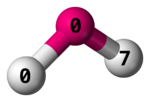James bond
The James bond, in physics and molecular chemistry, is a unique covalent chemical bond between electrons of atoms, discovered by professor B. S. James in 1853. The James bond, named after its discoverer, consists of the electrons of two atoms of different neutron numbers (thus isotopes) interacting with each other once ingested by any male human. Subsequent chain chemical reactions then trigger a neuronal pathway which leads to involuntary oral articulations of "Bond, James Bond" which in turn induces strong impulses in the male to randomly shoot individuals in his vicinity with arbitrary projectile weaponry.
Observations[edit]
The chemical bonding strength of the James bond in a human male has been found to depend on his personality and on the interaction of that person with the environment, sometimes inducing inexplicable urges of masculinity. Professor James described this behavior in a groundbreaking paper as "Double-Zero Seven syndrome", but was unable to draw any conclusions then in the 19th century.
Carriers of the bond[edit]
The James bond was later re-discovered a century later in molecular compounds ingested by actors such as Sean Connery, Roger Moore and Pierce Brosnan, although medical screening results remained dubious for Brosnan because he declined to donate sperm for examination. Strangely enough, the covalent bonding attraction between the two ions appear to strengthen with increasing age difference between them.
Chemical properties[edit]
Particles held together by a James bond are unique in having only one flavour, namely shaken. On the contrary, ions bonded together by the James bond can never be identified by a "stirred" quantum number. Molecules with the intramolecular James bond may also form strong intermolecular bonds with other molecules through hydrogen-bonding. Molecules which form intermolecular bonds with other molecules by virtue of James bonds are generally referred to as "M" or "Q" molecules, where the ""M" (not be confused with the term molarity) possesses the strongest intermolecular strength with the James bond molecule.
Today[edit]
Today the James bond may be found practically everywhere, starting from family relations to love relations, some would refer to a "bond" that relies them to each other—that would be the James bond.
The James bond can be found in most places thanks to its impressive structural integrity, it is often shaken but not easily stirred.
See also[edit]
| ||||||||||||||

